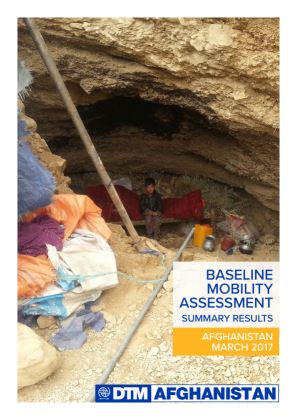-
Countries
-
Data and Analysis
-
Special Focus
-
Crisis Responses
Afghanistan — Baseline Mobility Assessment Report 1 (March 2017)

Contact
DTM Afghanistan, DTMKabul@iom.int
Language
English
Location
Afghanistan
Period Covered
Jan 29 2017
Mar 16 2017
Activity
- Mobility Tracking
- Baseline Assessment
The DTM Baseline Mobility Assessment was conducted from 29 January to 16 March 2017 in 3 provinces: Nangarhar, Kunar and Laghman, covering a total of 42 districts and 1,368 settlements with existing target populations. As of 16 March 2017, there are 246,317 IDPs and 183,425 returnees, who were formerly displaced, in the three provinces. 281,527 individuals left the three provinces either across a district or provincial boundary (fled IDPs) and 65,771 individuals left Afghanistan (out migrants).The total number of Returnees from abroad is 544,364 which in relation to the total base population of the three provinces (2,456,500) indicates that 1 person in 5 is a returnee. Migrants that left Afghanistan for another country, however, only amount to 65,771 (3% of the base population). These displacements occurred between 2012 and March 2017.Nangarhar, which borders Pakistan, is the province most affected by displacement. The majority of returnees are from Pakistan and most enter through Torkham (in Nangarhar), the busiest border post between the two countries. Concurrently, the presence and activities of Taliban insurgents and ISIS fighters challenging the control of the Afghan National Security Forces (ANFS) regularly triggers displacement.
